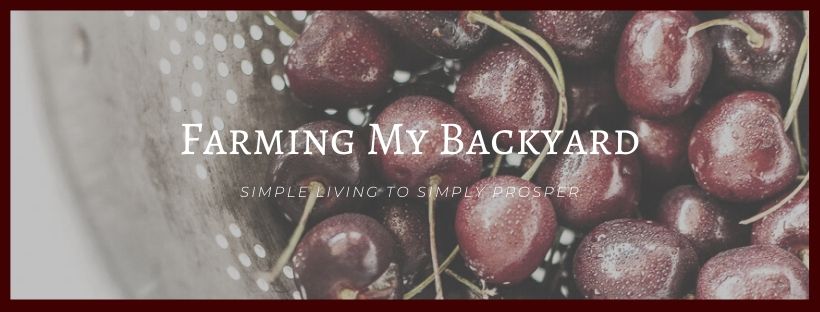When you are planning out a fruit tree guild you can use any plants you want, but there are some plants that are used quite frequently. The best plants are those that have multiple uses, especially if they are also a food crop. Here are some of the most popular plants for food forests.

Popular Plants For Food Forests
When you are planting a food forest you want the most food crops you can get in the least space. Here are some great edible crops to include:
- Apples
- Arugula
- Artichokes
- Asparagus
- Blackberry
- Buckwheat
- Chives
- Currants
- Dill
- Echinacea
- Edible Honeysuckle
- Fennel
- Garlic
- Ginseng
- Gooseberry
- Hazel/Filberts
- Hosta
- Hyssop
- Oregano
- Pear
- Peppermint
- Quince
- Raspberry
- Rhubarb
- Rugosa rose
- Thyme
There are some popular plants that are almost always included in a food forest because they are so useful, even though they are not grown for food. Here are some of the top ones!
- Clover
- Comfrey
- False Indigo
- Geranium
- Lucerne
- Queen Anne’s Lace
The Layers of a Food Forest
When you plant a food forest, it is common to mimic a naturally occurring food forest and to grow different layers of plants. You have your very tall tree layer, followed by an understory tree layer. For more details about the tree layers, check out 55 Trees That Are Great For Fruit Tree Guilds.
Growing throughout all the layers will be the vine layer, which takes advantage of the available vertical space. Check out Vines You Should Grow in Your Fruit Tree Guild for more details about the best plants for your vine layer.
Next up is the shrub layer. The shrub layer can reach up to six feet tall, and join in to the understory layer depending on how large your plants grow. Popular plants to include in this layer are roses, serviceberry, filberts, willow, bamboo, butterfly bush, lilac, raspberry, chokeberry, cherry dogwood, elder, sage, and rosemary.
Next up is the herb layer. There is a large variety of plants that can be included here. Many nitrogen fixers belong in the herb layer, as do dynamic accumulators. Some other good choices for the herb layer are sweet cicely, parsley, tarragon, fennel, dill, thyme, peppers, tomatoes, okra, collards, Good King Henry, chard, bush beans, echinacea, mint, chives, and lemongrass.
After the herb layer, you’ll want to include some ground covers. For more details, check out 16 Great Ground Covers For Your Fruit Tree Guild.
And while you may not be able to see it, you can also include root crops in your food forest! Popular plants for this layer include daikon radish, turnips, potatoes, sunchokes, turmeric, ginger, carrots, parsnips, garlic, onions, sweet potato, and licorice.
Other types of plants for your food forest
Just because a plant isn’t edible doesn’t mean that it doesn’t have a place in your fruit tree guilds or food forest. Sometimes you may want to include plants for medicinal purposes, or to help keep the other plants healthier. For example, foxglove is poisonous, however it can be a great “plant doctor” and prevent problems to the plants around it.
Related Posts:
- 44 Insectiary Plants For Your Fruit Tree Guild
- 55 Trees That Are Great For Fruit Tree Guilds
- How To Start A Fruit Tree Guild
- These Are The Best Plants To Suppress Grass Around Fruit Trees
- How To Plant Fruit Trees
- What Are The Best Nitrogen Fixers?
- Here’s Why Our Cities Need More Urban Permaculture
- 17 Dynamic Accumulators You Need In Your Food Forest
- Vines You Should Grow in Your Fruit Tree Guild
- Best Plants To Chop and Drop In Your Fruit Tree Guild
- 16 Great Ground Covers For Your Fruit Tree Guild
You may also want to include barrier or hedge plants, or consider including a windbreak. Spiney plants such as boxthorn, pyracantha or acacia armata can be planted around new trees to protect them from chicken damage. Euphorbia can successfully deter moles and other burrowing vermin.
There’s also good reasons to include livestock in your fruit tree guilds as well. For example, chickens eat apple parasites and geese keep grass under control. Not to mention poultry can be great for soil fertility!
Whether you include the most popular plants in your fruit tree guild, or opt for something a little more untypical, including a variety of plants in your food forest will help it be strong, healthier, and more productive.
Want To Raise Happy Chickens?
Subscribe for our newsletter and get the free email course Intro To Backyard Chickens as well as a free printable checklist to walk you through step by step!
